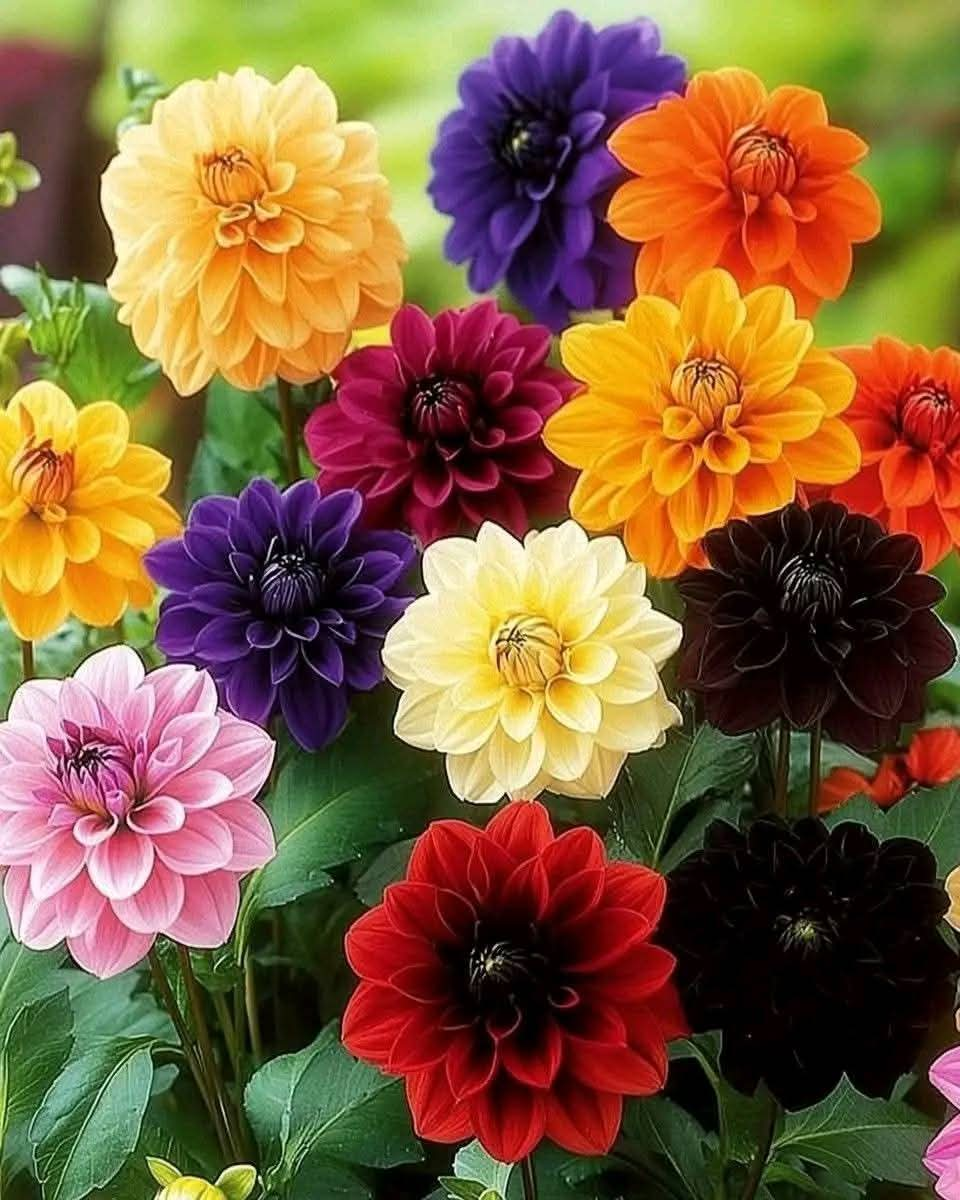Dahlias are among the most breathtaking flowers in any garden, known for their large, vibrant blooms and endless color variations. Blooming from summer to fall, they bring texture, depth, and elegance to flower beds, borders, and even containers. Whether you’re a seasoned gardener or a beginner, growing dahlias is a rewarding experience that results in gorgeous floral displays.
Why Dahlias Are a Garden Favorite
Dahlias are beloved for several reasons:
Striking Beauty: Their bold colors and intricate petal arrangements make them stand out in any landscape.
Long Blooming Season: Unlike many flowers, dahlias bloom from mid-summer through early frost, providing months of color.
Great Cut Flowers: Their sturdy stems and long vase life make them ideal for floral arrangements.
Variety of Sizes & Colors: From tiny pompons to giant dinner-plate-sized blooms, dahlias offer something for every garden style.
How to Grow and Care for Dahlias
- Choosing the Right Location
Dahlias thrive in full sun, requiring at least 6-8 hours of direct sunlight daily.
They grow best in well-ventilated areas, which helps prevent diseases.
- Best Soil for Dahlias
Plant in well-draining, fertile soil rich in organic matter.
A slightly acidic to neutral pH (6.5-7.0) is ideal.
Improve soil structure by adding compost, aged manure, or peat moss.
- Watering Schedule
Dahlias prefer consistent moisture but do not tolerate soggy soil.
Water deeply 2-3 times a week, depending on heat and dryness.
Use mulch to retain moisture and regulate soil temperature.
- Fertilizing for Healthy Growth
Feed with a balanced, low-nitrogen fertilizer (5-10-10 or 10-20-20) to promote strong stems and vibrant blooms.
Apply fertilizer every 3-4 weeks during the growing season.
- Staking for Support
Tall dahlia varieties require staking to support their heavy blooms.
Use bamboo stakes, tomato cages, or trellises to prevent breakage.
- Pruning & Deadheading
Pinch back young plants when they reach 12 inches to encourage bushy growth.
Regularly deadhead spent blooms to prolong flowering and prevent seed formation.
- Overwintering & Storing Tubers
In colder climates (zones 7 and below), dahlias must be dug up before winter.
After the first frost, cut back stems, dig up tubers, and let them dry for a few days.
Store in peat moss or sawdust in a cool, dry place until spring.
Best Companion Plants for Dahlias
Dahlias pair beautifully with other flowers and foliage plants, such as:
Salvia & Lavender – Adds contrast and attracts pollinators.
Echinacea (Coneflowers) – Provides a complementary shape and height.
Ornamental Grasses – Creates texture and movement in garden beds.
Marigolds & Zinnias – Boosts color variety while deterring pests.
Using Dahlias in Landscaping
Dahlias work well in various garden settings:
Borders & Flower Beds: Plant in clusters for a bold visual impact.
Container Gardening: Choose compact varieties for patios and balconies.
Cut Flower Gardens: Harvest blooms for stunning bouquets and arrangements.
Cottage Gardens: Blend with roses, hydrangeas, and other perennials for a charming, romantic feel.
Final Thoughts
With their dazzling colors, diverse sizes, and long-lasting blooms, dahlias are a must-have for any garden. Whether you’re growing them for personal enjoyment or floral arrangements, these flowers will reward you with months of beauty and joy.
Are you growing dahlias this season? Share your favorite varieties and gardening tips in the comments!
More Articles You Might Like
-
Texas Toast Sloppy Joes: The Crunchy, Cheesy Upgrade You Didn’t Know You Needed
There’s something timeless about sloppy joes. For generations, this saucy, savory, and slightly sweet ground beef sandwich has been a go-to comfort food in American kitchens. It’s quick, filling, and family-friendly—perfect for busy weeknights. But what if we told you there’s a way to take this classic dish up a notch? Enter the Texas Toast…
-
Classic Pig Pickin’ Cake
When it comes to Southern desserts, few sweets shine as brightly as the Classic Pig Pickin’ Cake. This nostalgic cake, sometimes called a “Mandarin Orange Cake,” has roots deep in Southern tradition. It gets its playful name from its frequent appearance at pig pickin’s—Southern-style barbecue gatherings where communities come together to enjoy slow-cooked pork, sides,…
-
Lemon Garlic Butter Chicken with Creamy Parmesan Pasta
There’s something irresistible about the combination of tender, golden-browned chicken paired with a creamy pasta coated in Parmesan cheese. Add the brightness of lemon, the depth of garlic, and the richness of butter, and you have a recipe that feels indulgent yet approachable enough for a weeknight dinner. Lemon Garlic Butter Chicken with Creamy Parmesan…



